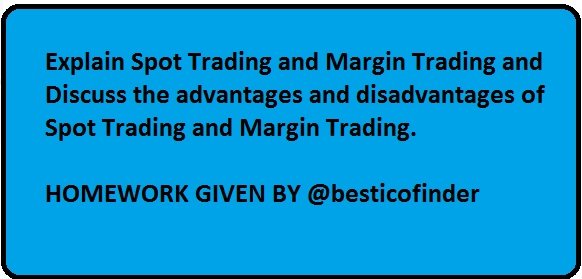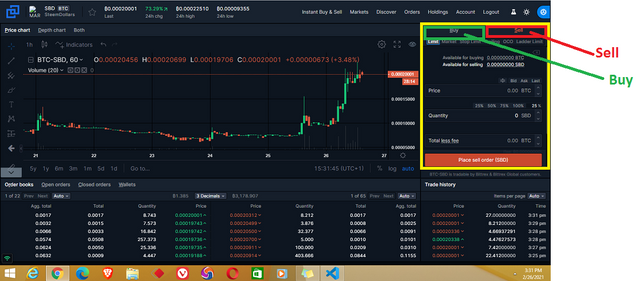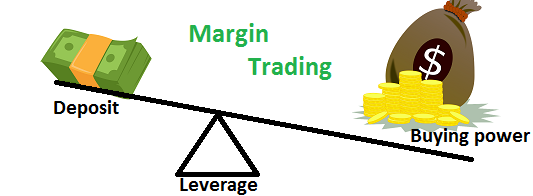
We all learned a lot from the post by @besticofinder on spot and margin trading, and to show that we understand his lectures, we were given homework to write about what we know about spot and margin trading. I will like to go straight to my points without much ado.
What is spot trading
Spot trading is referred to as a ground in which buyers and sellers can transact financial assets at an agreed market price which is most times immediate. Spot trading cut across many areas like crypto, forex, and commodities. Spot trading can be likened to trade by barter that is done in those days. You give me 2 pounds of Apple, and you get 1 pound of roasted chicken. It is done immediately in most cases, and lo! The transaction is sealed. Technology has changed the order, but we can still tap from the good experiences. In the crypto world, traders can buy assets using the spot trading techniques, and agreement is made instantly without seeing one another
Spot trading is is seen as the buying and selling of assets on the spot [immediately]. Sometimes, it might not be on the spot. What I mean by this is that, when a seller sets a price that conforms with what a buyer wishes to pay, the transaction happens immediately. Also, when the price is below, the asset will pend until the price that matches reaches before it fills. Either way, they are both spot trading
I will like to give an example of spot trading using Bittrex exchange
.png)

From the above image, after selecting the pair I want to trade, the next thing I did was to either buy or sell. And on Bittrex, the buy and sell can be located on the right side of the screen. I used green and red boxes and lines to show that in the image. Also, in the yellow box, the price, quantity, and fee play an important role. The price will be filled by me as the trader. If the actual price of the asset I'm buying or selling is 0.0002002BTC, I can decide to increase or decrease it. Also, I can go for the normal price (biding or asking price if I wish). But any price I set will determine the number of assets to be sold or purchased either way. So my action here would determine whether I will buy or sell instantly or wait for the price I put to fill by itself when there is conformity

Just from the above image, that is the spot price for the buyer and the seller. The ones at the top are the leading prices. If anyone who wants to buy or sell an asset chooses any of the leading prices, it would fill immediately if the number of the asset in question tally. Else, some parts will fill and the remaining will be pending till a marching price is located. Buyers and sellers create the spot price by posting their buy and sell orders which fill accordingly depending on the differences in buy and sell order on the table
Advantages of spot trading
traders can buy and sell instantly in the market without any obstruction.
At any time, spot trading can be carried out even with a small fund
The risk is minimal. There is nothing like paying of debt
Fund can be managed by self.
Bad trade can be left to bounce back. There is flexibility in spot trading
Simplicity and automation
Disadvantages of spot trading
Margin trading
The way margin trading is done is different from spot trading because traders are allowed to borrow money irrespective of their current asset, however, not too low. So margin trading can be defined as the process in which a trader borrows funds to trade. What I understand about margin trading is this
:
 Image designed by me
Image designed by me
Mr Kone has $25,000, and wishes to buy an asset with $50,000, he then borrows $25,000 either from a trader or from the exchange to complete what he needs. After that, he bets the $50,000 and waits for the market to move in his favor. There is already an amount to pay the exchange or the trader apart from the $25000 borrowed. This is called equity. So irrespective of how the market moves, Mr. Kone has no option than to pay his equity and the initial money borrowed. If he gains, he is on a safer side
The margin trading has many rules that makes it unique. They protect the interest of the lendee not to run into losses, and they also respect the lender, that's why he/she is given an extral amount to trade with. However, margin trading has a specific percentage your fund must not get down to. Once it is discovered that your fund has reduced to a stipulated percentage, they "call in" the remaining fund by liquidating the asset
What is margin call
When fund is "called in", it means the loss is regulated so that the trader or exchange that borrow money out won't lose their fund. For example, if 50% of the fund used for trading is from a trader or an exchange (e.g, $25000 from me and $25000 from them), once a certain percentage has reduced from the whole $50000 (depending on the equity agreed on), some measures are taken by either party (the trader/exchange or the person that is indebt). The "call in" will enable liquidation of asset in order to allow the trader/exchange have their money back. Nevertheless, every shortage incured will be paid. To avoid this, more fund can be added to the trade once it starts hiting the "call in" stage. Below are some of the disadvantages of margin trading
Disadvantages of margin trading
Marging trading can be said to have it's advantages in the sense of a heavy profit if the market goes in favor, but if vise versa, the effect is grave.
You must pay whatever you borrow irrespective of what happens to the fund. There is no excuse.
Fund is controlled by exchange because they would call in fund if you run out of the price allotted to the position to save the lender from losing fund.
Marging trading involve huge risk because huge amount is always involved. If there is no extral fund to control the investment when it's coming down against you, you take all the losses. You might lose more money that what you invested to save the day.
There is no flexibility. You can't leave a bad trade to bounce back. It's either you terminate to cut lose or invest more to cover the loop holes.
Advantages of margin trading
If marging trading is properly managed, the profit it would accrue withing a period is mouth watering.
It is easy to borrow from other traders if one have a less capital.
Conclusion
Both spot and margin trading are good. If either is properly managed, they have their advantages. Also, if not properly managed, no fortune will come from it. This is the little I know about spot and margin trading I hope I have answered the question given by our professor @besticofinder in the homework. The crypto academy is really expanding my knowledge. Thanks to the professor for giving us this wonderful topic. Thank you for reading.
CC
@steemitblog
@steemcurator01
@steemcurator02
@besticofinder


.png)




Hello @ckole ,
You have done a really good work ! You have explained spot trading and margin trading with screenshots of Bittrex exchange. I love the way you have explained it ! Nice work [9]
Thank you
Thank you my prof. I appreciate your contribution, and I'm glad to follow your course.
Thanks.